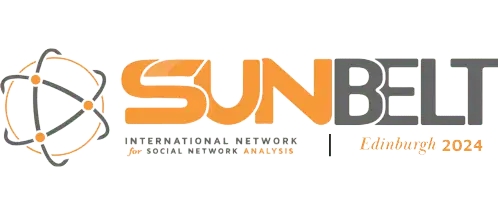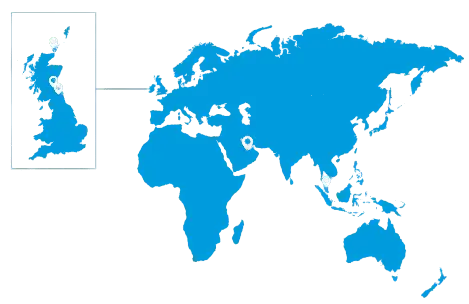Workshops
List of Accepted Workshops*
*subject to sufficient registrations
Read the abstract for each title by clicking the ‘+‘ sign
Half day (3 hours) workshops
Pavel N. Krivitsky, David R. Hunter
Robert Krause, Tomáš Diviák
Tom A.B. Snijders, Johan H. Koskinen
Filip Agneessens
Nynke M.D. Niezink
Alberto Caimo
Srebrenka Letina, Mark McCann
Kariyushi Rao, Ty Hayes, Oana Vuculescu, Mads Kock Pedersen, Carsten Bergenholtz
Michał Bojanowski, Pavel N. Krivitsky
This workshop provides an introduction to analyzing egocentrically sampled data with exponential-family random graph models (ERGMs) for statistical network analysis. It is a hands-on workshop demonstrating how to fit, diagnose and simulate both static and dynamic ERG models from such data, using the ergm.ego package, part of the integrated Statnet software collection in R. Topics covered in this session include:
Brennan Antone, Kyosuke Tanaka, Noshir Contractor
Interactive teaching methods help learners internalize key concepts about social networks and apply them in their social or professional lives. Interactive activities can introduce “network thinking” and connect it to real-world decisions. This 3-hour workshop will introduce five different interactive teaching exercises, provide instructional materials, and discuss their use. These exercises are designed for use in classes, or as stand-alone workshops for organizational or professional development. The first exercise, 6-DOS (Six Degrees of Separation), helps participants consider their network awareness and strategies to raise their awareness. The second exercise, RAD (Relational Analytics Dashboard), is a teaching case on how network-enabled people analytics can shape organizational decision-making. Third, MDT (My Dream Team) is a platform for helping participants assemble teams and make new connections. The fourth exercise, PNR (Personal Network Report), guides participants through reflecting on their own networks in a professional or academic context. Fifth, the ERGM Builder exercise is a teaching tool designed to help participants understand and reason about statistical models of networks. We will provide a live demonstration of each teaching exercise, as well as distribute slides/material and instructional guides for running each exercise. Additionally, we will discuss the role that interactive exercises can play as part of a larger social network curriculum.
Zsófia Zádor, Naomi Arnold
Martina Morris
Zsófia Zádor, Naomi Arnold
Michał Bojanowski, Lorien Jasny
Those wishing to use the R programming language for network analysis now have a plethora of choices when it comes to libraries. In this workshop, we survey the main packages used for network data management, analysis, and visualization. We will cover 1) importing network data (from actual files), 2) network objects and attributes, 3) computing basic descriptives (attribute distribution, mixing matrix, density, degrees, betweenness, closeness), and 4) visualization (layouts, node aesthetics). These will be done side by side for the different packages, as well as discussion of the strengths and weaknesses of each. We conclude with time for attendees to work either on toy datasets or with their own data with help from instructors. This workshop is a unification of workshops “Using R and ‘igraph’ for Social Network Analysis” and “Introduction to Social Network Analysis with R and statnet” that has been offered on Sunbelt and EUSN conferences since 2011. It will serve as an introduction for those wishing to take “Moving beyond descriptives”, “Using ‘igraph’ for SNA: advanced topics”, “An introduction to ERGM with Statnet”, or other Statnet-related workshops on the program.
Martina Morris
Tom A.B. Snijders, Johan H. Koskinen
James Hollway, Jael Tan
Teaching and learning network analysis can be challenging. Network data often comes in various file and internal formats (from UCINET/Pajek to igraph/sna) and types (from unweighted and undirected networks to multimodal and multiplex ones). Software packages often specialize in a specific format and type of network. How many times have you or your students had to swap between different packages to complete analysis, or stuck to the options available in the package you were using? How often is this the case for your students? manynet offers a single R package to assist researchers with making, manipulating, and mapping many types of networks and assist teachers with practical tutorials. Users can quickly and easily add, delete, reformat, transform, split and join and, importantly, visualise networks with sensible but flexible defaults in minimal code. Moreover, everything works no matter whether you are importing from edgelists or Excel, Pajek or UCINET, and/or using it within R as a matrix, data frame, igraph, network, tidygraph, or even RSiena or goldfish objects. In this workshop, we’ll review the reasons why this package was developed and recent developments and improvements, and demonstrate how it can be used to accelerate descriptive steps in your research and improve the learning experience for those encountering social networks for the first time. Familiarity with R and RStudio is recommended.
Scott Duxbury, Jenna Wertsching
Exponential random graph models (ERGM) are widely used in the social sciences to examine determinants of graph structure. This 3-hour workshop will introduce attendees to mediation and moderation analysis in ERGM using the ergMargins package for R. The workshop will describe why ERGM coefficients cannot be compared between models and why coefficients for interactions—including node matching, node mixing, and other common measures of homophily and heterophily—cannot be interpreted without adjustment. Topics covered will include (1) mediation analysis, (2) moderation analysis, (3) mediation analysis when the mediator is an interaction, and (4) mediation analysis when the main effect is an interaction. We will review a range of special cases, including interactions involving both continuous and discrete variables, necessary conditions for a causal interpretation, and mediation analysis involving endogenous graph statistics. Attendees will come away from the workshop with a deeper understanding of inferential difficulties in ERGM and with knowledge on how to address each issue using ergMargins.
Christian Steglich, Alla Loseva
Scott Duxbury
What network selection mechanisms generate unique network structures and topologies? What are the implications of those selection mechanisms for individuals nested in social networks? This 3-hour workshop will introduce attendees to recent statistical frameworks for micro-macro network analysis using the netmediate package for R. The workshop will describe (1) procedures for estimating, interpreting, and null hypothesis testing the effects of micro-level selection mechanisms on macro-level network structures, and (2) introduce recent statistical procedures for evaluating the indirect effects of micro-level network selection mechanisms on individual and group level outcomes (e.g., adolescent smoking behavior). Topics covered will include (1) micro-macro analysis when the interest is treating a specific network structure (e.g., segregation, transitivity) as the dependent variable and (2) identification of indirect network selection effects on individual and group outcomes. We will review necessary assumptions for each type of analysis and strategies for meeting those assumptions in observational network data. Attendees will come away from the workshop with a deeper understanding of statistical procedures for micro-macro network analysis and how these procedures can be used to address research questions that implicate indirect network selection effects using netmediate.
James Hollway, Jael Tan
Researchers are increasingly interested in analyzing multimodal (one-, two-, or three-mode), multilevel (connected multimodal networks), or multilayer (multiplex or signed) networks. Conventional analysis typically involves ‘projecting’ these networks into one-mode networks so that they can be used with existing tools. However, this procedure can leave important structural information. The migraph package in R offers smart solutions to these problems. In this workshop, we will concentrate on CUG and (MR)QAP tests and models, and network diffusion and learning models. After reviewing these methods, we will progress through some tutorials. Because migraph is based on manynet, all functions work for any compatible network format – from base R matrices or edgelists as data frames, to igraph, network, or tidygraph objects. Familiarity with R and RStudio is recommended. Participants can bring their own research problems and data and, depending on the number of participants, remaining time can be used to discuss them.
Anni Hong, Nynke M.D. Niezink
Zachary Neal
Weighted networks can be challenging to visualize or analyze, and high density can obscure a network’s underlying structure. In such cases, it can be useful to focus on the network’s “backbone,” which contains only the most significant edges. There are many different ways to extract the backbone of a dense or weighted network, and different types of networks require different methods. This workshop will provide an introduction to simplifying networks by extracting their backbones using the R Backbone package, including selecting the correct model, extracting the backbone, and interpreting the results. We will use both toy and empirical data to simplify two-mode projections (e.g., co-attendance, co-authorship, co-sponsorship networks), weighted networks (e.g., edges represent strength, intensity, frequency), and dense unweighted networks. Workshop participants are also encouraged to bring their own data. Basic familiarity with R will be helpful, but is not required.
Thomas W Valente
Örjan Bodin, Manuel Fischer
Pavel N. Krivitsky, Carter T. Butts
This workshop provides instruction on how to model social networks with ties that have weights (e.g., counts of interactions) or are ranks (i.e., each actor ranks the others according to some criterion). We will cover the use of latent space models and exponential-family random graph models (ERGMs) generalised to valued ties, emphasising a hands-on approach to fitting these models to empirical data using the ‘ergm’ and ‘latentnet’ packages in Statnet. Statnet is an open source collection of integrated packages for the R statistical computing environment that support the representation, manipulation, visualisation, modelling, simulation, and analysis of network data.
Antonio Rivero Ostoic
This workshop focuses on utilizing algebraic methods to analyze and visualize various network structures, such as multiplex, signed, two-mode, and multilevel networks, using real-life datasets from humanities and social sciences. These networks can have binary or valued data and may or may not have loops. Through this workshop, participants will learn how to create and manipulate multivariate network data, reduce multiple networks using algebraic procedures, and construct algebraic systems to represent relational and role structures within multiplex and multilevel configurations. The workshop will also cover the analysis of signed networks with structural balance theory and simple and valued affiliation networks within the formal concept analysis framework. Additionally, participants will be introduced to the visualization and manipulation of various network structures, such as multigraphs, bipartite graphs, and diverse lattice structures, using R packages. The content of the workshop is based on the instructor’s book, “Algebraic Analysis of Social Networks – Models, Methods, and Applications Using R” (Wiley ISBN: 978-1119250388), as well as other relevant literature, including the recent chapter “Relational Systems of Transport Network and Provinces in Ancient Rome” in “Mathematics for Social Sciences and Arts” (Springer Nature ISBN 978-3-031-37791-4) Hounkonnou, Martinovic, Mitrović, and Pattison (eds.) published in 2023.
Jochem Tolsma, Rob Franken
Patrick Biddix, Bruce McPherson, Marc Smith
Ana Lucia Rodriguez De La Rosa, Bianka Valentin, Karina Raygoza, Nicholas Christakis
Raffaele Vacca
This workshop is an introduction to the R programming language and its tools to represent, manipulate, and analyze egocentric or personal network data. Topics include: introduction to ego-network research and data; introduction to data structures and network objects in R; visualizing ego-networks; calculating measures on ego-network composition and structure; converting ego-network measures to R functions; applying these functions to many ego-networks. The workshop emphasizes R tidyverse packages for data science, showing how they can be used to easily conduct common operations in ego-network analysis and scale them up to large collections of networks. We’ll cover specific packages for network analysis (igraph, network, egor), data management (dplyr) and programming (purrr). No previous familiarity with R is required; participants only need a laptop with R and RStudio installed. This workshop has been taught for the past several years at different international conferences, including INSNA’s Sunbelt and EUSN meetings. It draws on concepts and methods discussed in “Conducting personal network research: A practical guide” by Christopher McCarty, Miranda Lubbers, Raffaele Vacca and José Luis Molina (Guilford Press). More details on the workshop’s materials and instructor are here: raffaelevacca.com/egonet-r.
David Tindall
Michelle Birkett, Patrick Janulis, Gregory Phillips, Kate Banner, Joshua Melville, Bernie Hogan
This workshop will provide an orientation for conducting network data capture for public health within Network Canvas. Network Canvas (http://www.networkcanvas.com) is a free and open-source software suite that facilitates the collection of self-reported social network data. It uses touch-optimized interfaces in an interviewer-assisted environment.
Katherine Ognyanova
Cornelius Fritz, Michael Schweingerger
Ian McCulloh
Pablo Galaso, Sergio Palomeque
Jochem Tolsma, Rob Franken, Anne Maaike Mulders, Daniel Cowen
Full day (6 hours) workshop
Robert Wilhelm Krause
Ernst C. Wit, Federica Bianchi, Martina Boschi, Edoardo Filippi-Mazzola, Ruta Juozaitiene, Alessandro Lomi
Alessia Galdeman, Cheick Ba, Manuel Dileo, Matteo Zignani, Sabrina Gaito
Elisa Bellotti, Betina Hollstein
The workshop focuses on the use of mixed methods research designs when studying whole and ego-centered social networks. The workshop will be conducted in two parts. The first part introduces social network qualitative research and the principles of mixed methods research designs and its contributions to the study of social networks, pointing out advantages and challenges of this approach. Illustrations of the theoretical and methodological aspects are given by bringing examples from a variety of fields of research. The second part is devoted to the presentation of concrete procedures to apply mixed methods in network research both at the level of data collection and analysis. This part includes an introduction of different approaches to the collection of whole and ego-centered network data, i.e. interviews, ethnographic methods, archival data, together with visual instruments. It then moves to the analysis of the quantitative and qualitative dimensions of network relationships and structures in a mixed method perspective.
Juergen Lerner, Alessandro Lomi
Andrea Fronzetti Colladon, Roberto Vestrelli, Francesca Grippa
Jan Fuhse
Viviana Amati, Marion Hoffman


